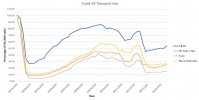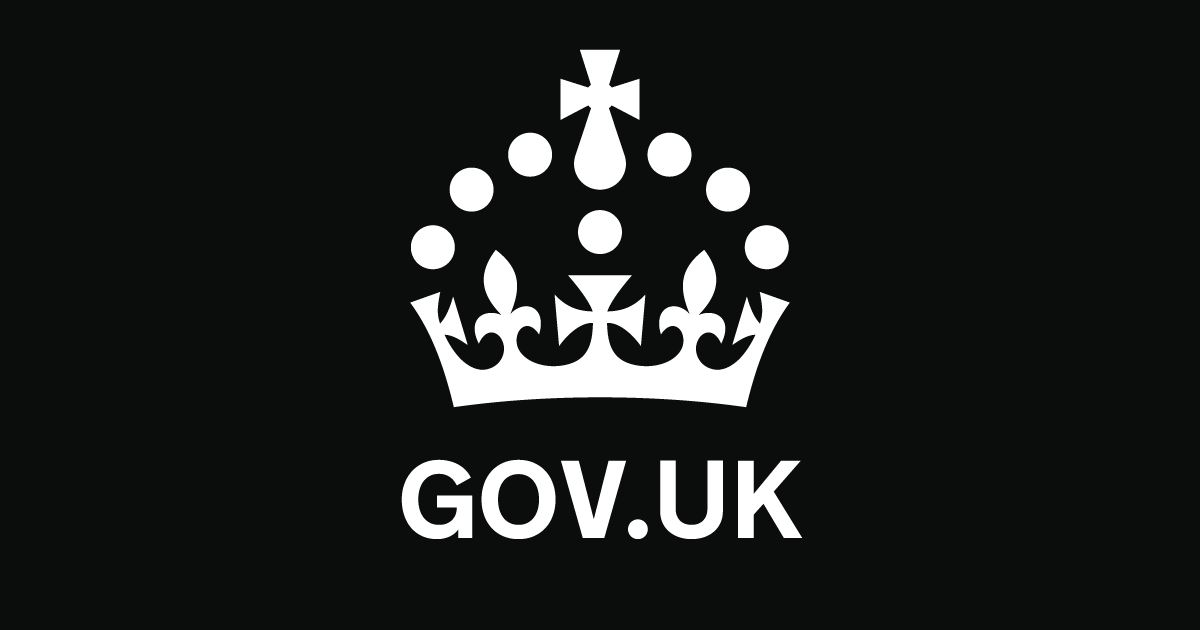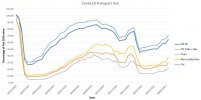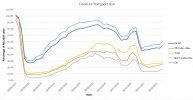philosopher
Established Member
- Joined
- 23 Sep 2015
- Messages
- 1,349
As some of you may know, the Department for Transport have been tracking how transport use has changed since the start of the pandemic. I have done some analysis of the DfT statistics and calculated an overall non freight transport use index based on 2019 mode share for distance travelled. 83% of the index comes from car journeys, 11% from National Rail and the rest is from bus and tube. I have excluded cycling as cycling appears to be very seasonal and a lot of it may be done for purely leisure purposes rather than to go from A to B.
Here is a graph showing how transport use has changed since the start of March 2020:

The statistics show:
Here is a graph showing how transport use has changed since the start of March 2020:

The statistics show:
- Transport use was lowest for the week ending the 12th April 2020, the week of Easter during the first lockdown, with transport use only at 27% of normal.
- Overall transport use began to recover at the end of April, however train, bus and tube travel remained at very low levels throughout May and only really started to recover in June.
- Transport use was closest to normal in September, reaching 87% of normal in the week ending 20th September 2020. This coincides when national restrictions were at there lightest and the schools were back.
- Transport use gradually fell throughout late September and October as restrictions tightened once again.
- Transport use for all modes, at about 63% of normal was a lot higher during the November lockdown then the Spring 2020 lockdown.
- Transport use during the current lockdown fell to 47% of normal, similar to that of the second half of May, however it has been creeping upwards since then. For the third week of February it was at 54%.
- Throughout the pandemic public transport has fallen a lot more than car use, with train and tube use falling the most.
DfT mode share statistics come from here:
Daily domestic transport use by mode
Daily usage of selected domestic transport by mode for Great Britainwww.gov.uk
Transport use during the coronavirus (COVID-19) pandemic
To monitor the use of the transport system during the coronavirus (COVID-19) pandemic. DfT provides statistics on transport use by mode.

Modal comparisons (TSGB01)
Data about passengers, travelling to work, casualty rates and employment occupations, produced by Department for Transport.www.gov.uk
Modal comparisons (TSGB01)
Data about passengers, travelling to work, casualty rates and employment occupations, produced by Department for Transport.


